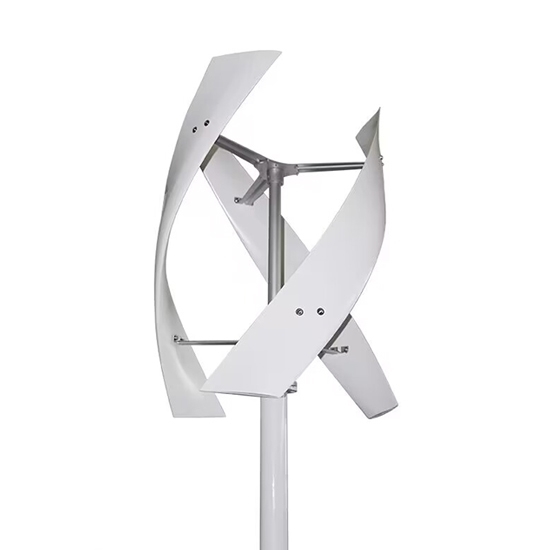
- Stock: In Stock
- Model: RDDLZ-VAWT-300
- Weight: 1.00
- SKU: RDDLZ-VAWT-300
Available Options
Buy a low-price 12V vertical air wind turbine online, a 3-blade vertical wind turbine rated at 300 watt, with a starting wind speed of 2m/s and a rated wind speed of 12m/s. This vertical axis turbine is compact, lightweight and easy to install, making it an excellent choice for residential, commercial and industrial applications.
Specification
| Model | RDDLZ-X5-300 |
| Rated Power | 300W |
| Rated Voltage | 12V/24V |
| With Controller | Yes |
| Start Up Wind Speed | 2m/s |
| Rated Wind Speed | 12m/s |
| Survival Wind Speed | 50m/s |
| Wind Wheel Diameter/Height | 0.55m/0.75m |
| Number of Blades | 3 |
| Blades Material | Nylon |
| Fuselage Material | Aluminum alloy |
| Magnetic Steel | NdFeB |
| Generator Type | Three-phase AC permanent magnetically suspended generators |
| Controller System | Electromagnetic brakes |
| Speed Regulation | 360° Automatically Adjust Windard |
| Installation Flange | DN20 |
| Degree of protection | IP54 |
| Gross Weight | 10kg |
| Top Net Weight | 11kg |
| Dimension | 860*380*200mm |
Dimension (Unit: mm)
Applications
The battery is charged by the wind turbine and solar panels through the controller, and the DC output port of the controller directly supplies power to the DC load. On days without wind or light, the power output by the wind turbine and solar panels is not enough to charge the battery, which can cause the battery to be under-voltage. In this case, the controller output dry contact control signal automatically switches to the grid power to supply the load.
Tips: How to choose horizontal and vertical wind turbine?
- Horizontal-axis wind turbines (HAWT) are the most common type of wind turbine and are characterized by having blades that rotate around a horizontal axis. HAWTs are more efficient than vertical-axis wind turbines (VAWT) in areas with strong and consistent winds. HAWTs are also easier to maintain and repair, and they can be located further away from residential areas, reducing noise pollution.
- On the other hand, vertical-axis wind turbines (VAWT) have blades that rotate around a vertical axis, and they are better suited for urban and low-wind areas. They are also more compact, making them easier to install in tight spaces. VAWTs are also less affected by turbulence, so they can be located closer to buildings and other structures.
- In conclusion, both horizontal and vertical wind turbines have their advantages and disadvantages, and the best choice depends on the specific needs and conditions of the installation site.
